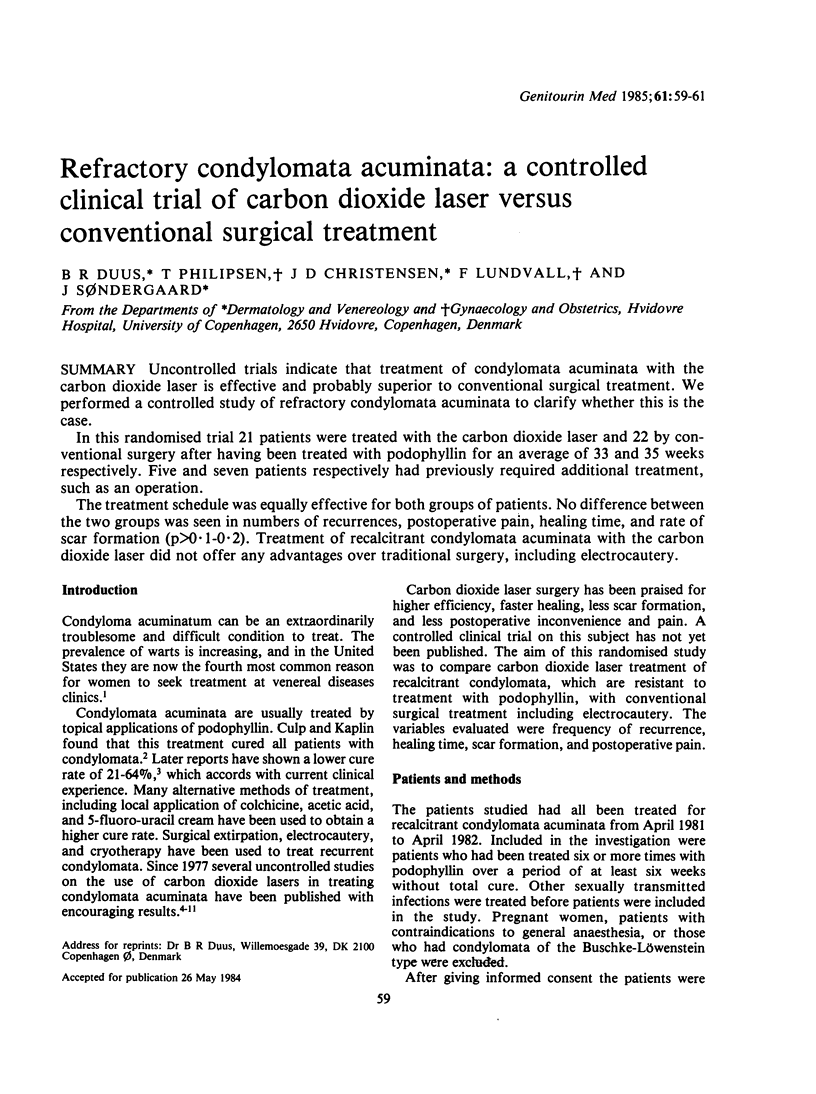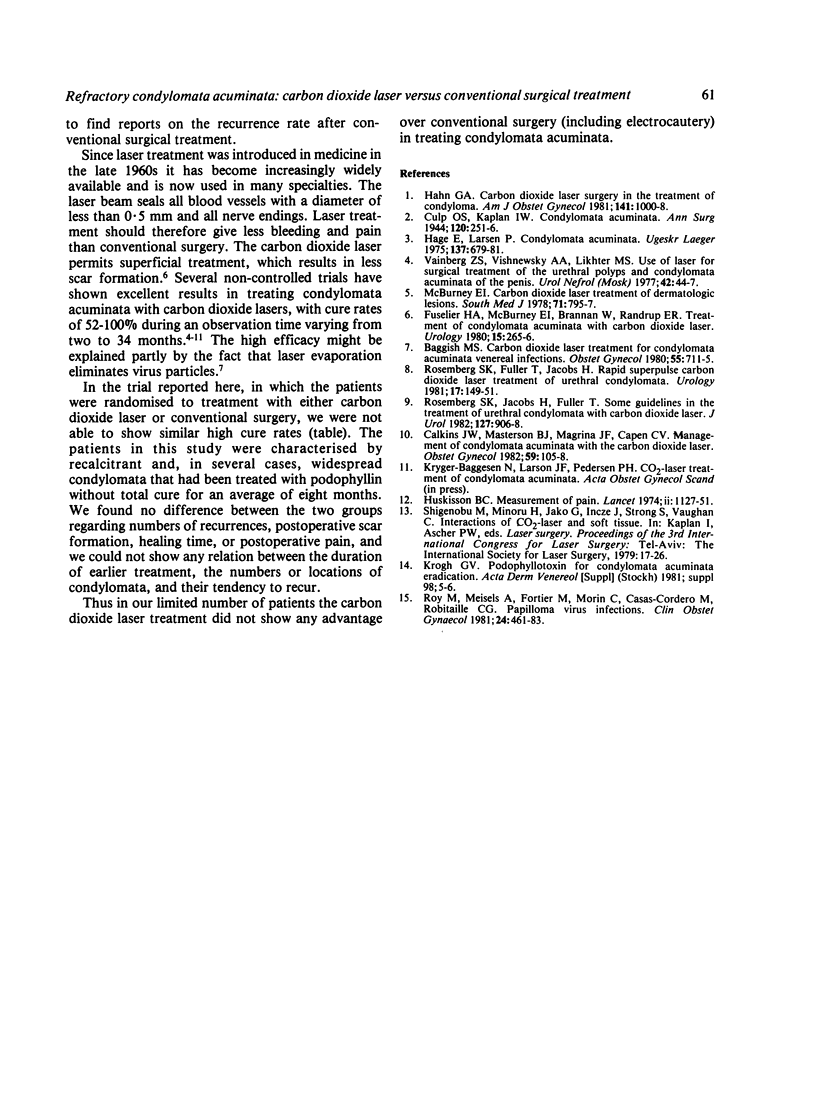Abstract
Uncontrolled trials indicate that treatment of condylomata acuminata with the carbon dioxide laser is effective and probably superior to conventional surgical treatment. We performed a controlled study of refractory condylomata acuminata to clarify whether this is the case. In this randomised trial 21 patients were treated with the carbon dioxide laser and 22 by conventional surgery after having been treated with podophyllin for an average of 33 and 35 weeks respectively. Five and seven patients respectively had previously required additional treatment, such as an operation. The treatment schedule was equally effective for both groups of patients. No difference between the two groups was seen in numbers of recurrences, postoperative pain, healing time, and rate of scar formation (p greater than 0.1-0.2). Treatment of recalcitrant condylomata acuminata with the carbon dioxide laser did not offer any advantages over traditional surgery, including electrocautery.
Full text
PDF


Selected References
These references are in PubMed. This may not be the complete list of references from this article.
- Baggish M. S. Carbon dioxide laser treatment for condylomata acuminata venereal infections. Obstet Gynecol. 1980 Jun;55(6):711–715. [PubMed] [Google Scholar]
- Calkins J. W., Masterson B. J., Magrina J. F., Capen C. V. Management of condylomata acuminata with the carbon dioxide laser. Obstet Gynecol. 1982 Jan;59(1):105–108. [PubMed] [Google Scholar]
- Culp O. S., Kaplan I. W. Condylomata Acuminata: Two Hundred Cases Treated With Podophyllin. Ann Surg. 1944 Aug;120(2):251–256. doi: 10.1097/00000658-194408000-00012. [DOI] [PMC free article] [PubMed] [Google Scholar]
- Fuselier H. A., Jr, McBurney E. I., Brannan W., Randrup E. R. Treatment of condylomata acuminata with carbon dioxide laser. Urology. 1980 Mar;15(3):265–266. doi: 10.1016/0090-4295(80)90440-9. [DOI] [PubMed] [Google Scholar]
- Hage E., Larsen P. O. Condylomata acuminata. En retrospektiv underłgelse. Ugeskr Laeger. 1975 Mar 17;137(12):679–681. [PubMed] [Google Scholar]
- Hahn G. A. Carbon dioxide laser surgery in treatment of condyloma. Am J Obstet Gynecol. 1981 Dec 15;141(8):1000–1008. doi: 10.1016/s0002-9378(16)32691-6. [DOI] [PubMed] [Google Scholar]
- Huskisson E. C. Measurement of pain. Lancet. 1974 Nov 9;2(7889):1127–1131. doi: 10.1016/s0140-6736(74)90884-8. [DOI] [PubMed] [Google Scholar]
- McBurney E. I. Carbon dioxide laser treatment of dermatologic lesions. South Med J. 1978 Jul;71(7):795–797. doi: 10.1097/00007611-197807000-00017. [DOI] [PubMed] [Google Scholar]
- Rosemberg S. K., Fuller T., Jacobs H. Rapid superpulse carbon dioxide laser treatment of urethral condylomata. Urology. 1981 Feb;17(2):149–151. doi: 10.1016/0090-4295(81)90224-7. [DOI] [PubMed] [Google Scholar]
- Rosemberg S. K., Jacobs H., Fuller T. Some guidelines in the treatment of urethral condylomata with carbon dioxide laser. J Urol. 1982 May;127(5):906–908. doi: 10.1016/s0022-5347(17)54125-7. [DOI] [PubMed] [Google Scholar]
- Roy M., Meisels A., Fortier M., Morin C., Casas-Cordero M. Vaginal condylomata: a human papillomavirus infection. Clin Obstet Gynecol. 1981 Jun;24(2):461–483. doi: 10.1097/00003081-198106000-00010. [DOI] [PubMed] [Google Scholar]
- Vainberg Z. S., Vishnevskii A. A., Likhter M. S. Primenenie lazera dlia operativnogo lecheniia polipov uretry i ostrokonechnykh kondilom polovogo chlena. Urol Nefrol (Mosk) 1977 Mar-Apr;(2):44–47. [PubMed] [Google Scholar]


